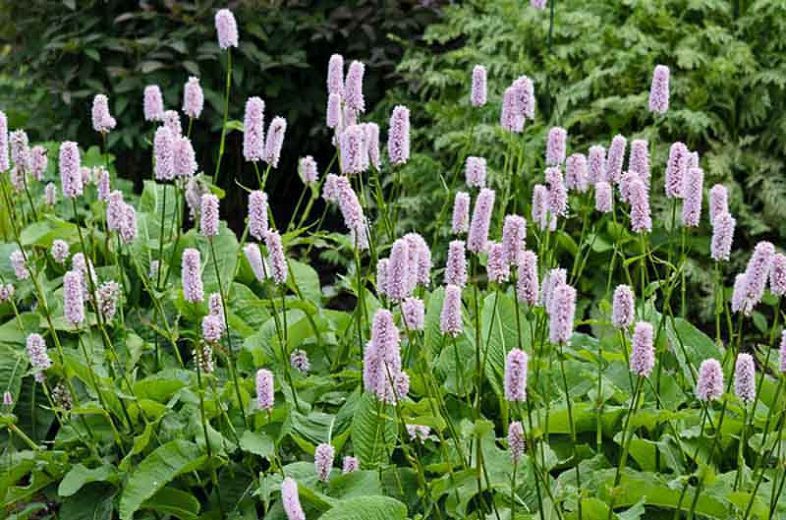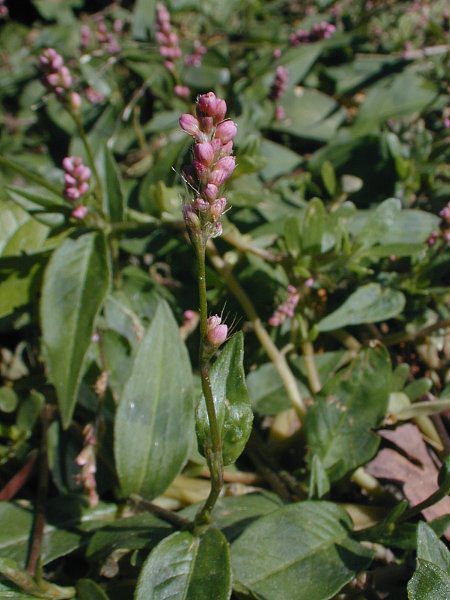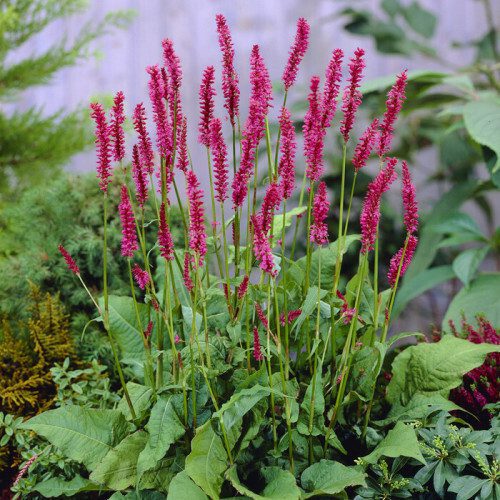Persicaria
From summer to autumn, these low-lying plants provide the prettiest ground cover.
You’d be forgiven for not knowing what a persicaria is.
Botanists have been shuffling the names for years – please don’t make me list all the changes – but, even if the name is unfamiliar, you’ll recognize the plants.
Those now brought together under Persicaria are an unexpectedly varied group. They include bold border perennials, rock garden plants, and even one that shows itself off best in summer containers.
And while many are grown for their spikes of usually pink or red summer and autumn
flowers, some are grown for their leaves.
Even the rock garden types are helpfully late flowering, creating a fresh look at a time when other alpines have long faded.
Most, though, are hardy perennials that begin contributing to the midsummer border and continue well into autumn.
They overlap with summer specialists and autumn flowers to help tie the look of the border together across the seasons.
Those with good foliage can be struck from their first spring emergence well into autumn and look dramatic behind golden sedges.
Most prefer soils that don’t dry out, and one or two can indeed be uncomfortably vigorous.
But they’re not difficult to lift and replant in the required space every few years, and you’ll have spare pieces to give to friends who’ve been admiring your plants so enthusiastically.
Persicaria bistorta is a perfect plant for planting in ditches and laterally because of its serpentine and winding rootstock,

which continually produces new spurs that reinforce the trench side of ponds and canals.
Persicaria longiseta Persicaria longiseta is a flowering plant in the knotweed family, known as long, bristle, short, bristle, long, and knotweed.

This species behaves under many common names, including creepers, crawlies, large – leafy knotweed, spiny – green nodes weeds, bristles on the stick, branches in the grass, clover and twig-like branches, or tufts of knotweed (or even tuffweed).
The best color and diversity of borders can be achieved by planting Persicaria amplexicaulis in a trench, combined with Miscanthus.

- Position Most varieties appreciate full sun
or partial shade in soil that doesn’t dry out. - Care Some are vigorous but easily controlled
Most are the best split and replanted after three or
four years. - Usually untroubled by pests or diseases. The foliage is often impressive before flowering. Many make useful, long-flowering ground cover.



























Comments are closed.